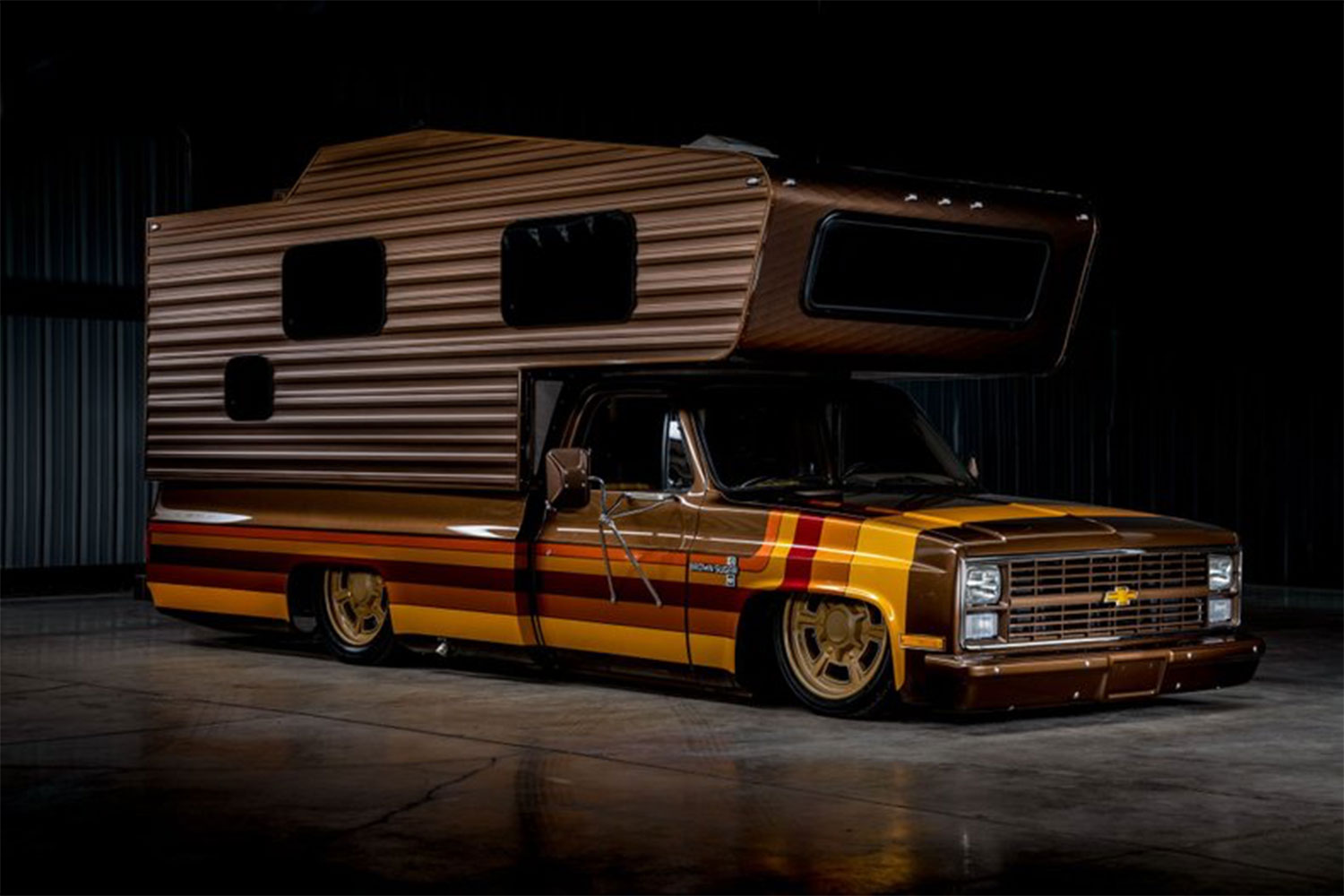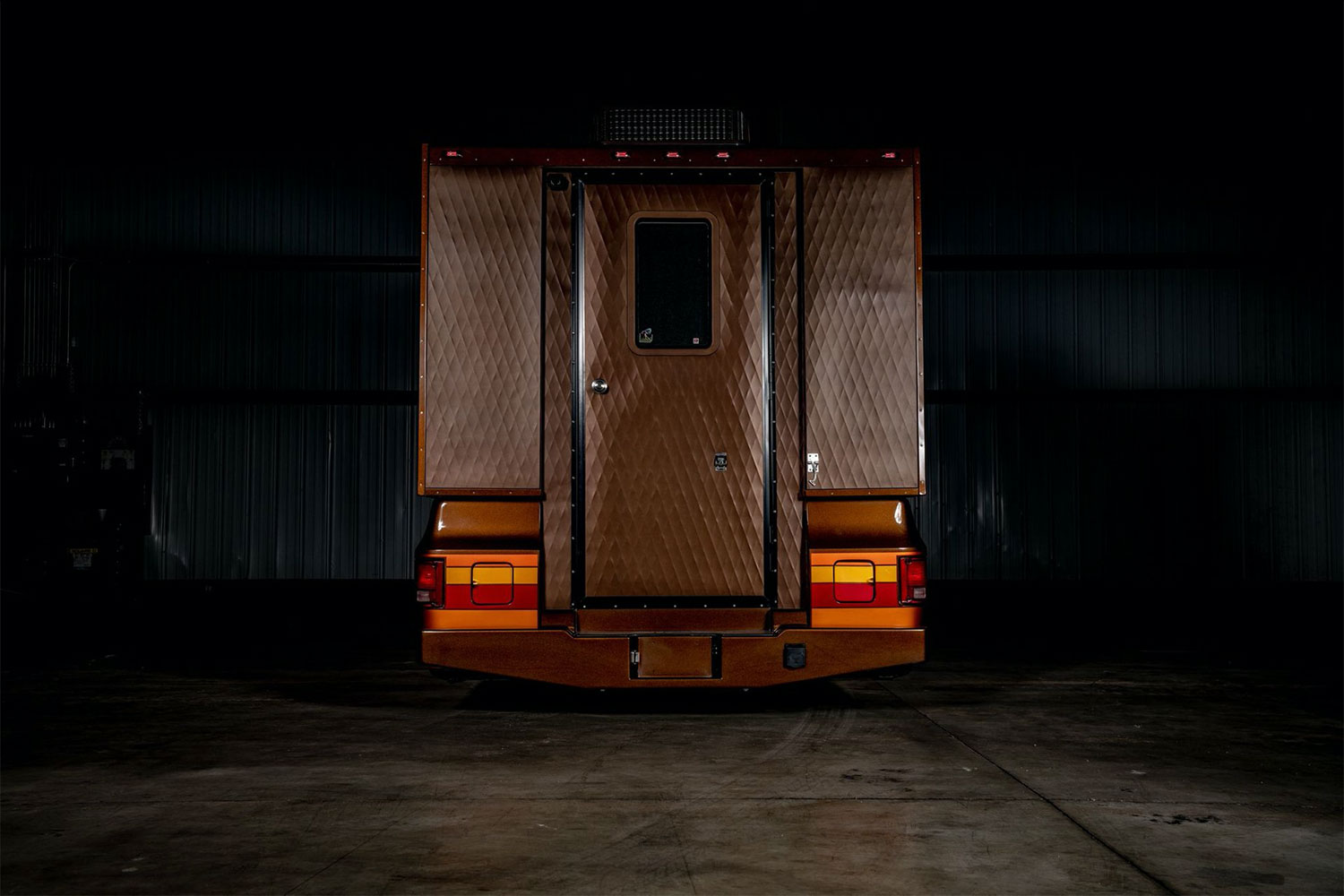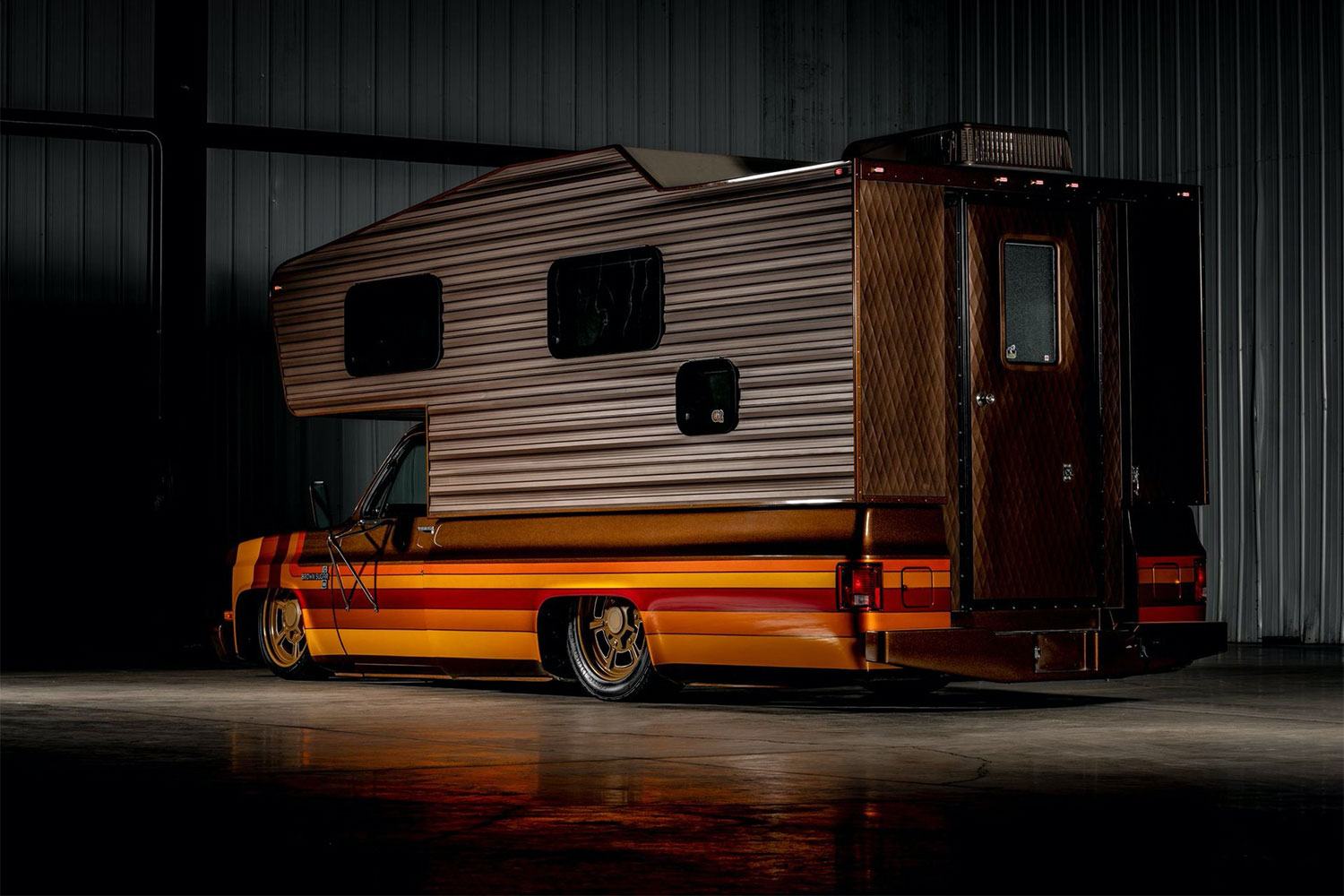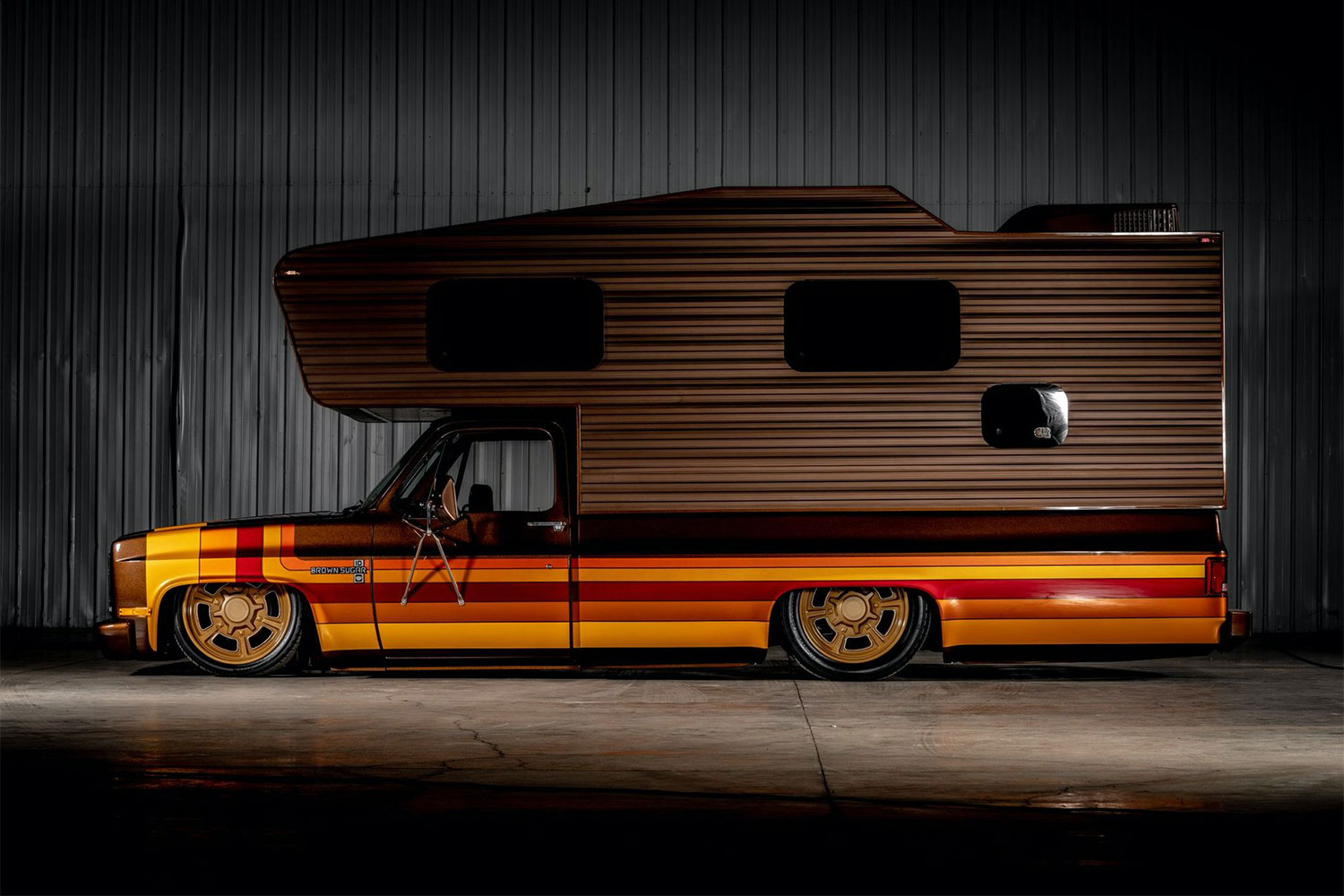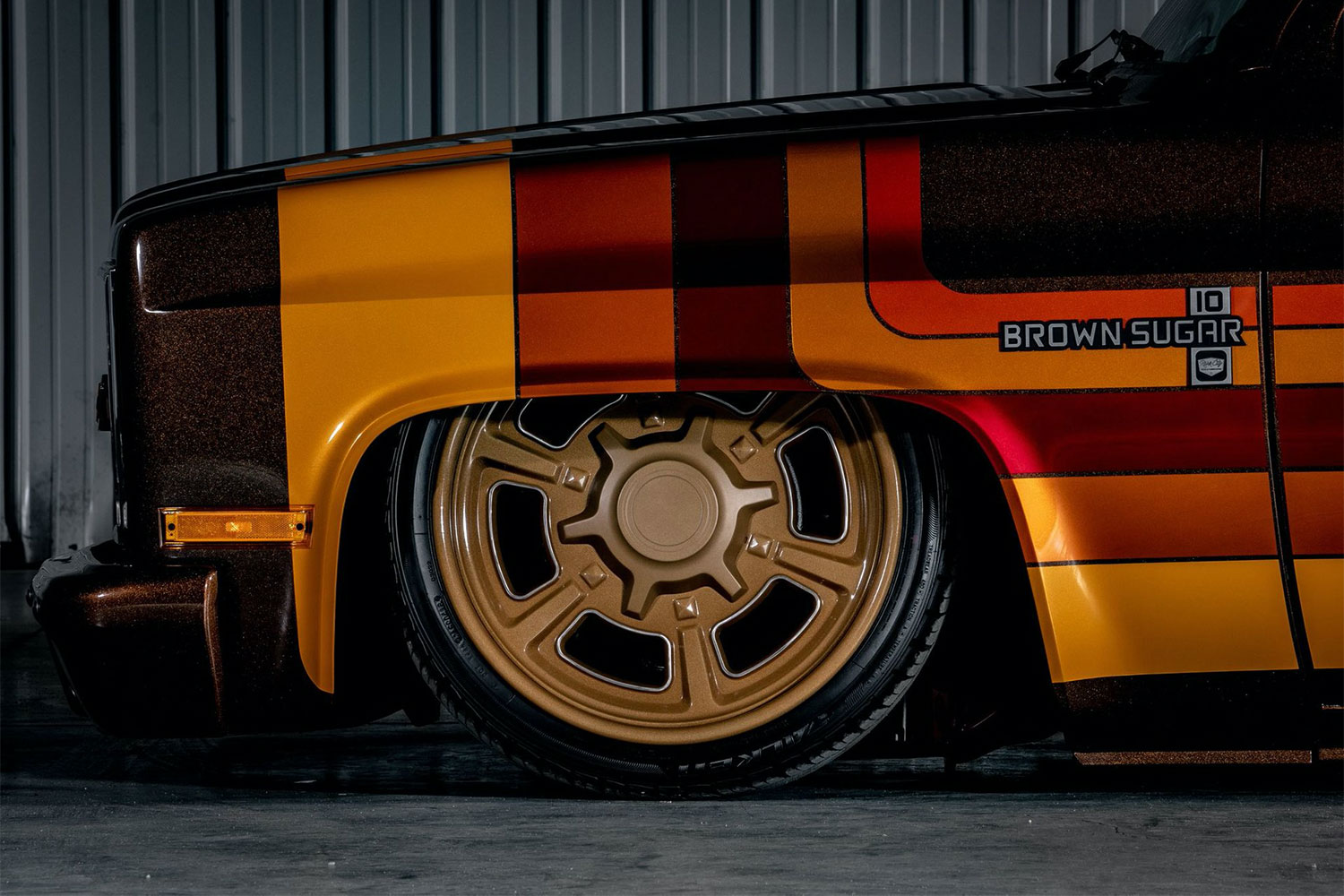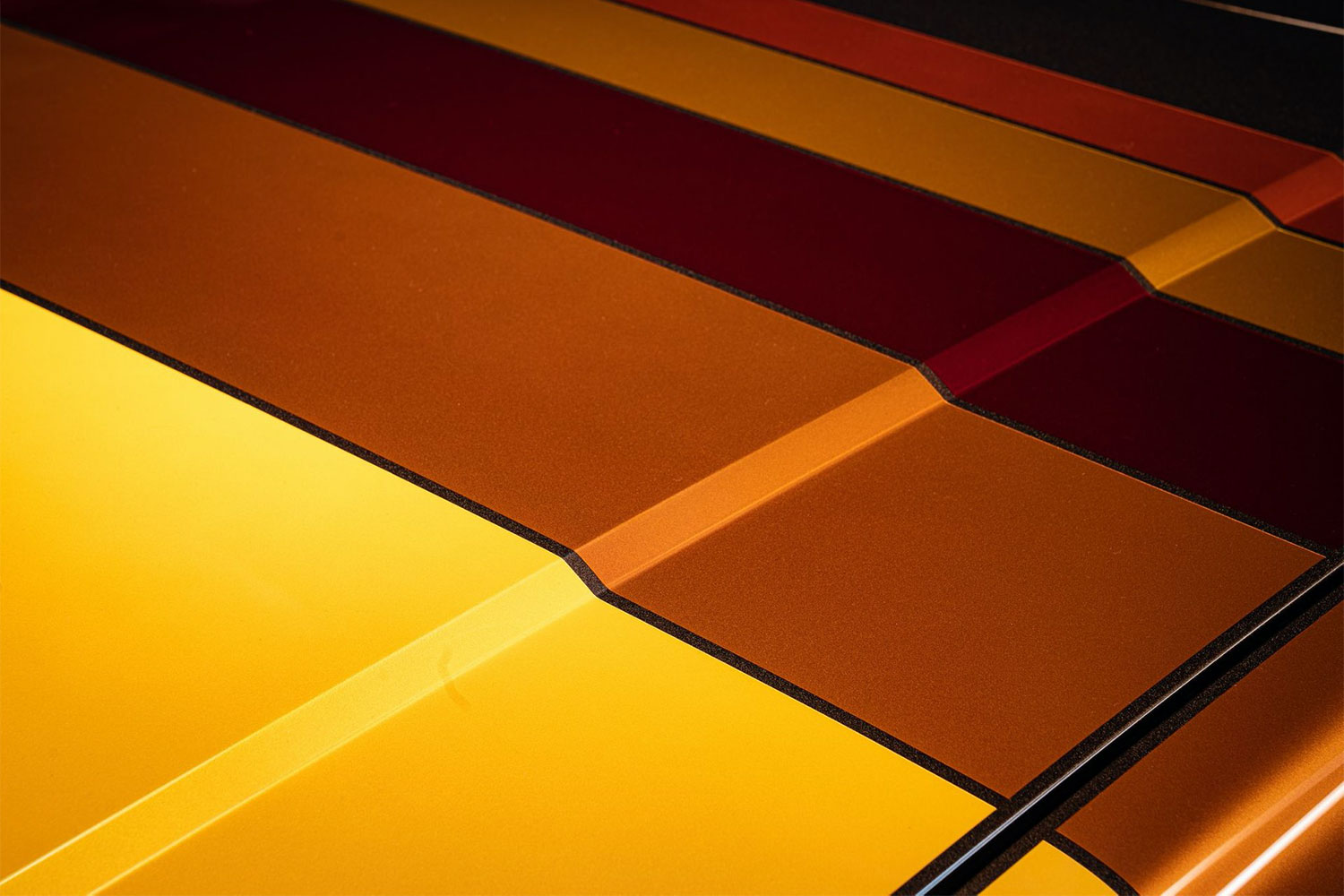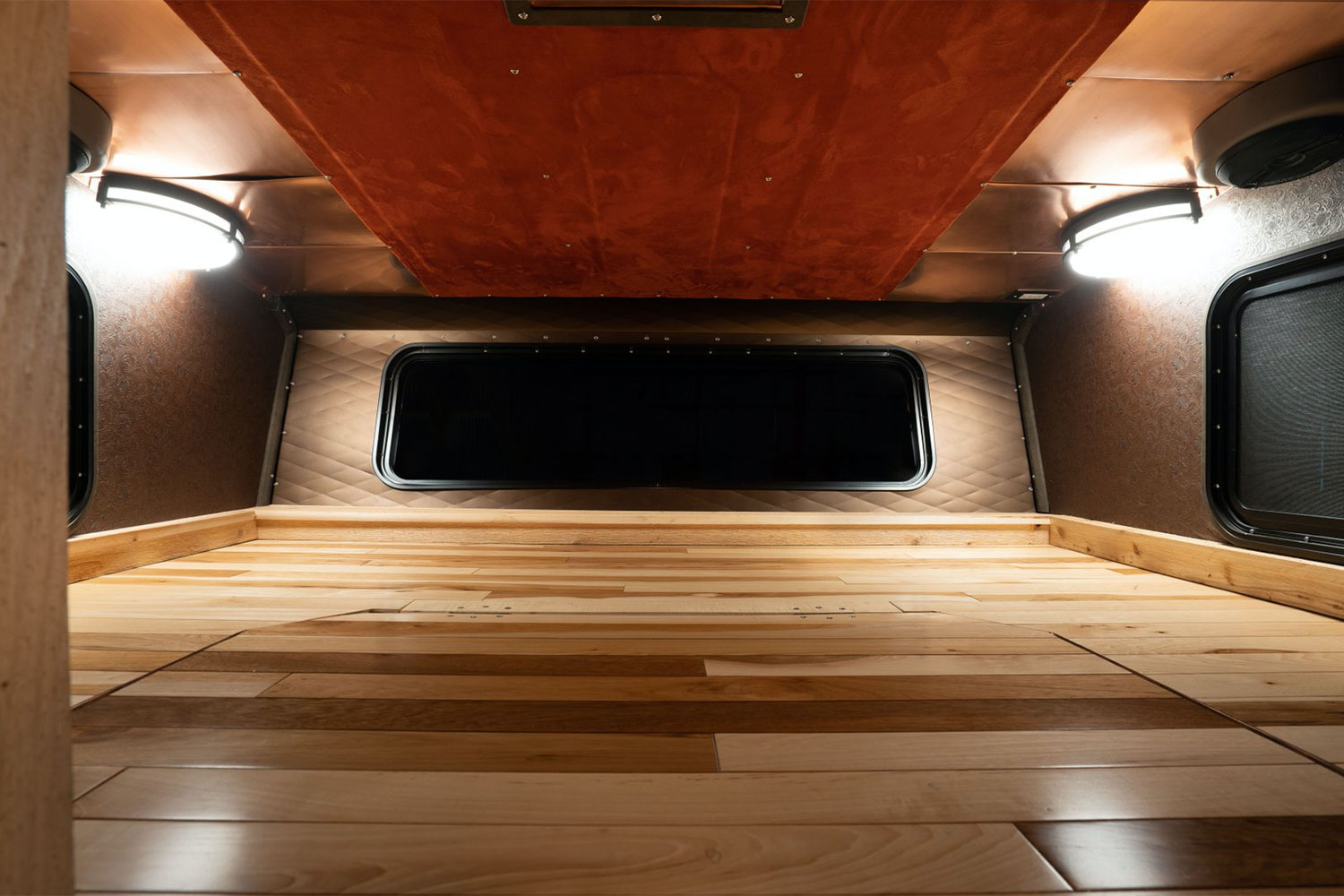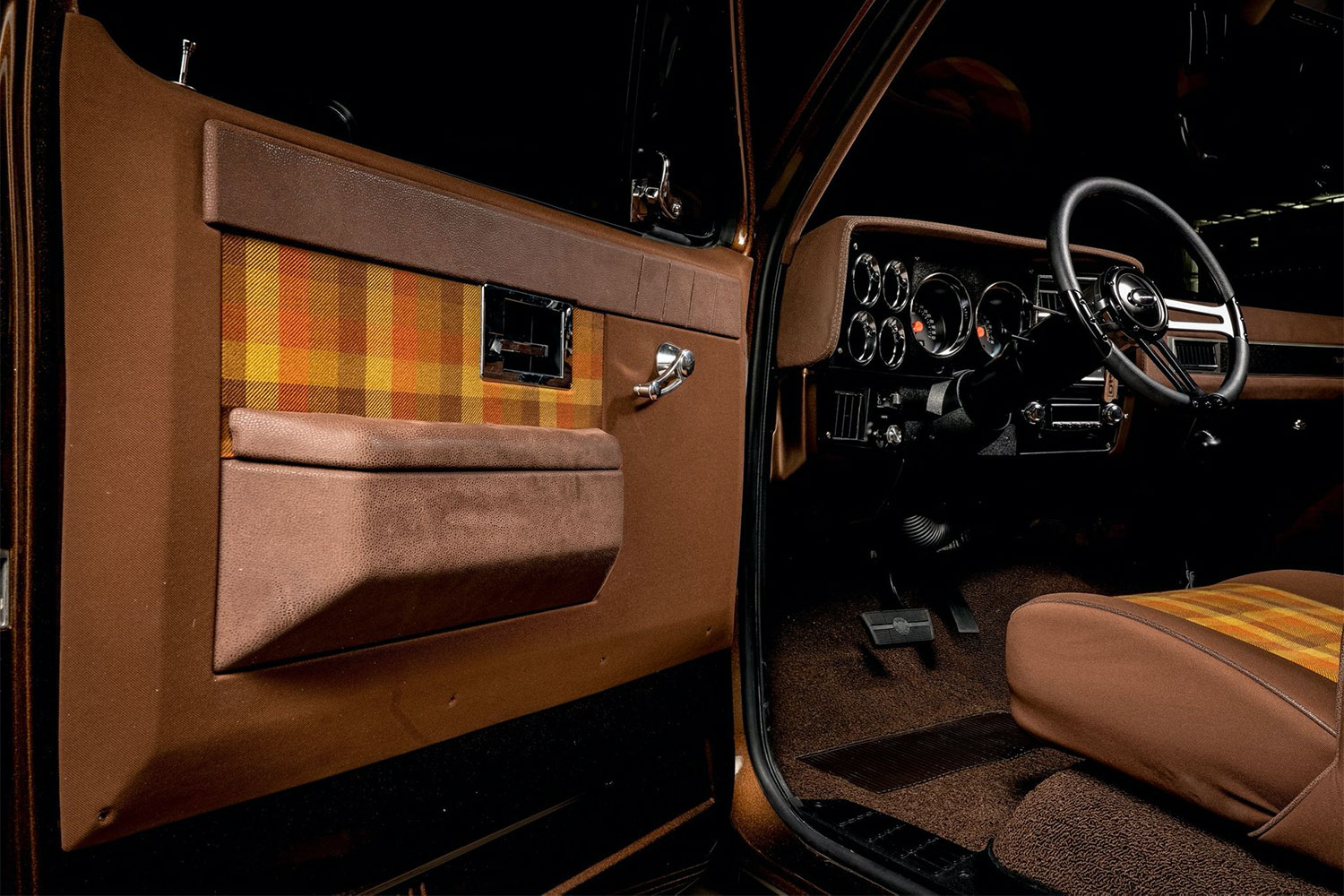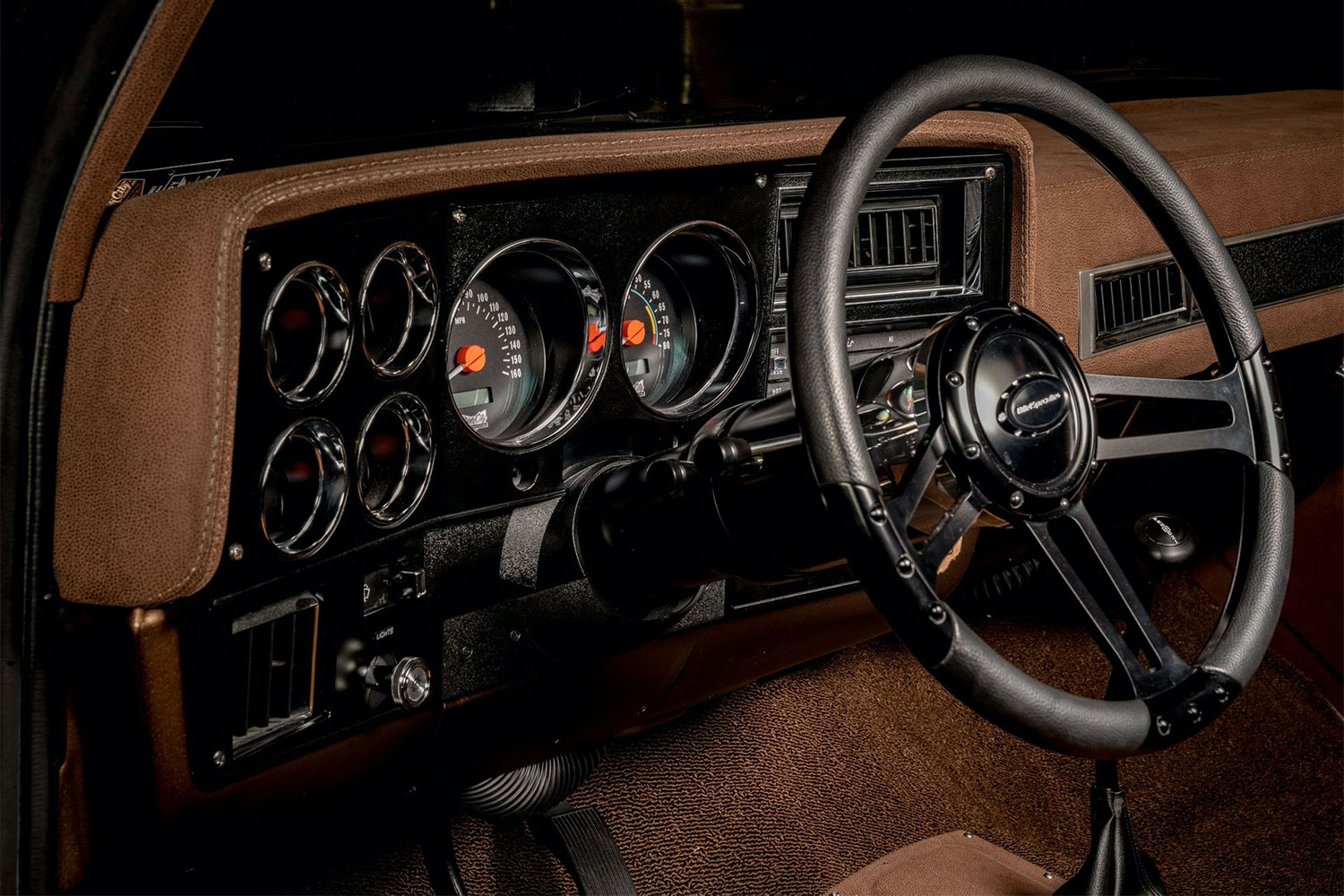In the automotive world, the 1980s walk a fine line between “vintage cool” and “just plain old.” Save for the rare, refinished Airstream, most aging RVs from the decade look better suited for a Breaking Bad-inspired “cook” in the desert. One Iowa garage has up-ended that stereotype, however, with a stunning RV overhaul.
The 1983 Chevrolet C30 Camper — dubbed “Brown Sugar” — is one of the most eye-catching vintage RV restomods we’ve ever seen. The glossy metallic brown exterior features yellow, orange, and red striping that cleverly and beautifully recalls the truck’s 80s roots. Even more striking is the ultra-low ride profile that pulls inspiration from the old-school, West Coast low-riders of the last century. The drop comes courtesy of a full air ride suspension capable of laying the front cross-member flat on the ground. The feature is absurd, impractical, and undeniably handsome.
While in motion, a GSI front suspension and steering system keeps the truck’s ride comfortable and on track. The heavy-duty rear setup uses a Watts Link to align the suspension and better balance the additional in-bed load. It’s all powered by a new Chevy LS 5.3-liter Iron block V8 paired with a 4L80E automatic gearbox for smooth shifting and power.
The interior is a pitch-perfect blend of ’70s- and ’80s-inspired retro design elements. Custom materials — including plaid upholstery, raw wood paneling, and industrial metal surfacing — provide a distinct, one-of-a-kind look. Every feature has been thoughtfully crafted to be both beautiful and practical. The sink, for example, was scratch-made from a vintage Coca Cola cooler/ice chest into a working unit with a freshwater hookup and water pump with a proper black water tank. Other modern conveniences include a kitchen with a microwave and glass-door refrigerator, over-cab sleeping quarters with a flip-up, flat-panel TV, and bespoke, whiskey-barrel-inspired subwoofers.
Grand Rapids Classics commissioned the custom Brown Sugar build from the restomod experts at River City Rods & Fabrication. It was purpose-built as a showpiece for SEMA 2019, where it was touted as one of the show’s most photographed vehicles. It has contended for numerous awards, including the Top 40 Battle of the Builders at last year’s SEMA. It was also crowned with the People’s Choice Award at the QCCA Expo Center Rod & Custom Show.
The Brown Sugar Chevy C30 Camper is currently on the market for $179,000. Sure, you could score a top-of-the-line Airstream for less, but we promise it wouldn’t be half as sexy.
